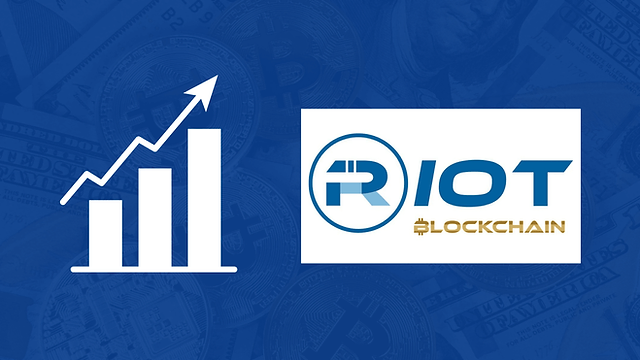Cryptocurrency mining for Riot Blockchain has come a long way since the inception of Bitcoin in 2009. In the early days, anyone with a regular computer could mine Bitcoins, but as the industry evolved, so did the complexity of the process. Today, it’s a highly specialized and competitive field that requires dedicated hardware, powerful software, access to mining sites, and a deep understanding of mining calculators and rigs. This article will delve into the world of cryptocurrency mining, exploring the essential components such as mining machines, software, mining sites, calculators, and the future of crypto mining.
Cryptocurrency Mining Machines For Riot Blockchain
- ASIC Miners: Application-Specific Integrated Circuit (ASIC) miners are the workhorses of cryptocurrency mining. They are designed to perform one specific task – mining a particular cryptocurrency. These machines are incredibly efficient and have significantly increased the hash rate capacity of the network. Bitcoin mining, for instance, is almost exclusively done using ASIC miners.
- GPU Miners: Graphics Processing Unit (GPU) miners are versatile machines used for mining a variety of cryptocurrencies. They are especially popular for mining Ethereum and other coins that require complex calculations. Miners often build custom rigs with multiple GPUs to maximize their mining power.
- CPU Miners: Central Processing Unit (CPU) mining, which was popular in the early days of Bitcoin, is now largely obsolete due to its inefficiency. CPUs are slow and not suited for the intense calculations required for mining. However, some smaller cryptocurrencies can still be mined using CPUs.
Crypto Mining Software for Riot Blockchain
- Operating Systems: Various operating systems, such as Windows, Linux, and ethOS, are used by miners. Each has its own advantages, but Linux-based systems are often favored for their stability and efficiency.
- Mining Software: Mining software, such as CGMiner, BFGMiner, and NiceHash, plays a crucial role in the mining process. These programs allow miners to control their hardware and connect to mining pools, where they combine their computing power with others to increase their chances of earning rewards.
- Wallet Software: To store and manage the cryptocurrencies mined, miners need a cryptocurrency wallet. Popular options include Electrum, Exodus, and Ledger Live.
Crypto Mining Sites for Riot Blockchain
- Mining Pools: Mining alone can be highly unpredictable, so miners often join mining pools. Mining pools are groups of miners who combine their computational power to increase their chances of successfully mining a block and receiving rewards. Some well-known mining pools include F2Pool, Slush Pool, and Antpool.
- Cloud Mining Services: Cloud mining allows individuals to rent mining equipment and share in the rewards without the need for physical hardware. HashFlare and Genesis Mining are examples of cloud mining services.
Crypto Mining Calculators in Riot Blockchain
- Profitability Calculators: These tools help miners estimate their potential profits based on factors like mining hardware, electricity costs, and the current crypto mining calculator price. Websites like WhatToMine and CryptoCompare offer useful calculators.
- Difficulty Calculators: Cryptocurrency networks adjust their mining difficulty to ensure a consistent block generation time. Difficulty calculators help miners understand how the network’s difficulty changes over time and how it impacts their mining potential.
Bitcoins Mining App
- Mobile Mining Apps: While mobile mining apps have gained popularity, it’s important to note that they are not as profitable as traditional mining methods. These apps are often seen as a way for users to learn about the mining process and cryptocurrencies. Examples include MinerGate and Crypto Miner.
Cryptocoin Mining Rig
- Custom Mining Rigs: Some miners opt to build custom mining rigs, especially for GPU mining. These rigs consist of multiple high-performance graphics cards and are often housed in specialized cases for efficient cooling.
- FPGA Miners: Field-Programmable Gate Array (FPGA) miners offer a middle ground between ASICs and GPUs. They can be programmed for specific algorithms, providing more flexibility than ASICs while being more efficient than GPUs.
The Future of Cryptocurrency Mining
Cryptocurrency mining is an ever-evolving industry, and its future holds promise and challenges:
- Environmental Concerns: The energy consumption of cryptocurrency mining has raised environmental concerns. Many miners are exploring sustainable energy sources to mitigate the impact.
- Regulation: Governments are starting to regulate cryptocurrency mining, which could affect the industry’s landscape. Miners need to stay informed about evolving legal requirements.
- New Coins and Algorithms: As new cryptocurrencies emerge, miners have opportunities to explore different algorithms and potentially lucrative coins. Some, like Ethereum, are shifting to proof-of-stake, which doesn’t require mining.
- Advancements in Hardware: Continuous advancements in mining hardware, such as more energy-efficient ASICs, will impact the industry’s competitiveness and profitability.
- Decentralization: Some projects are working on making mining more accessible and decentralized, ensuring that the process remains accessible to individuals and small-scale miners.
Cryptocurrency mining is a multifaceted industry that relies on specialized machines, software, and mining sites. The evolution of this field has been marked by an increasing need for efficiency, which has led to the development of advanced cryptocurrency mining machine like ASICs and powerful GPU rigs.




